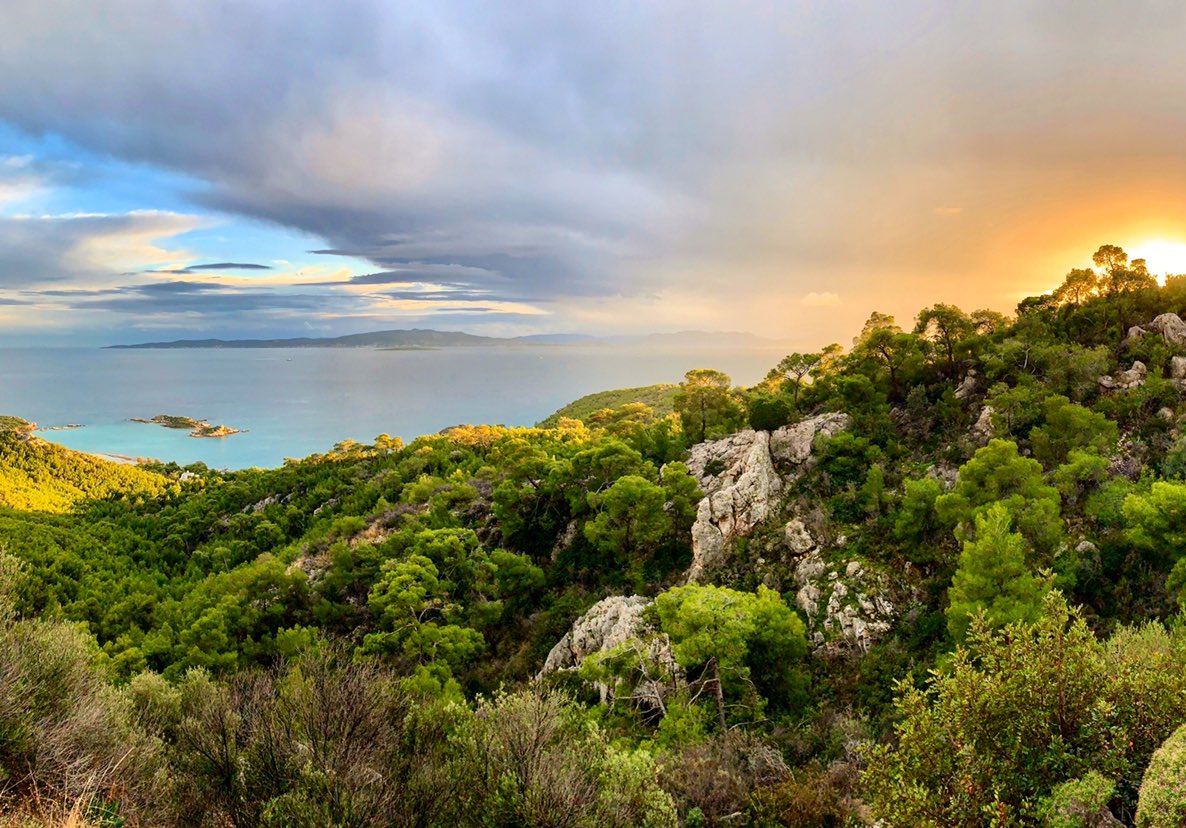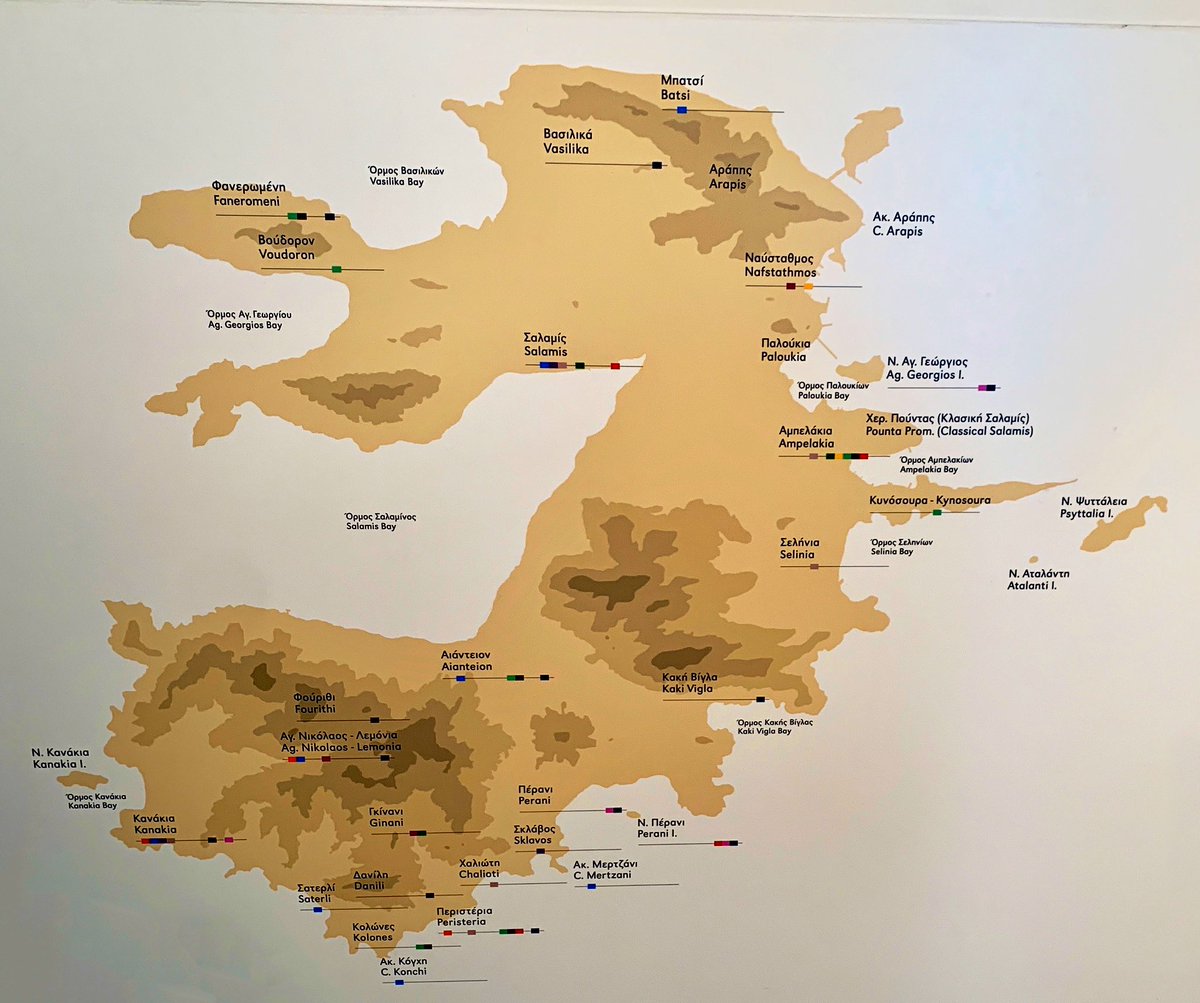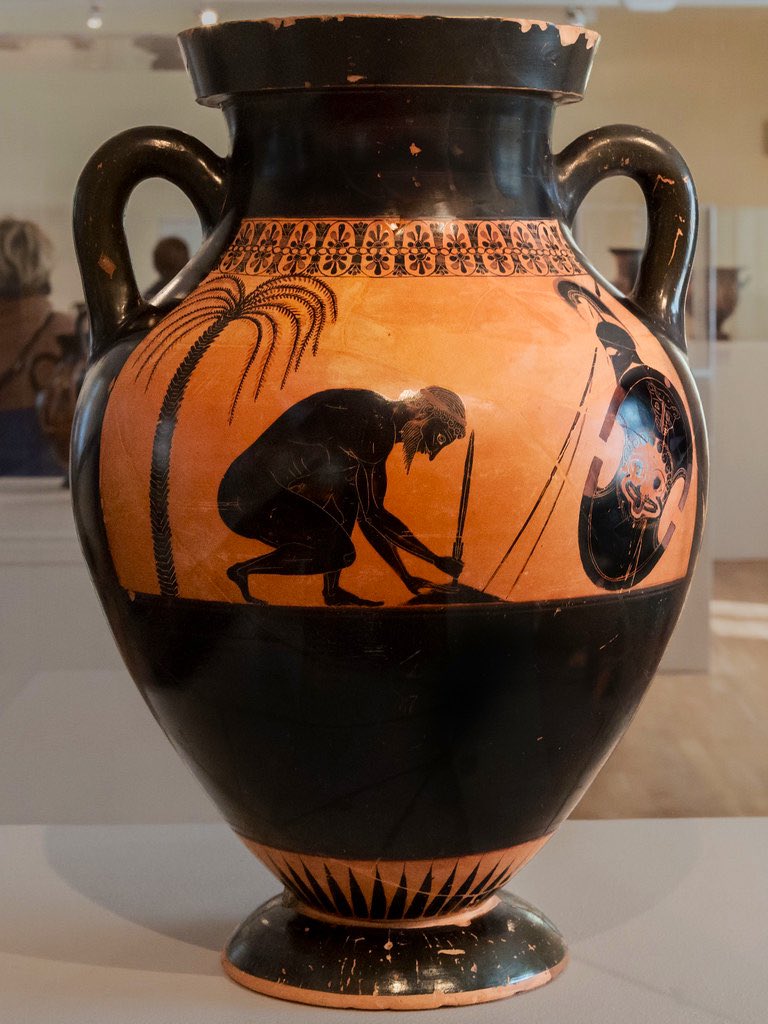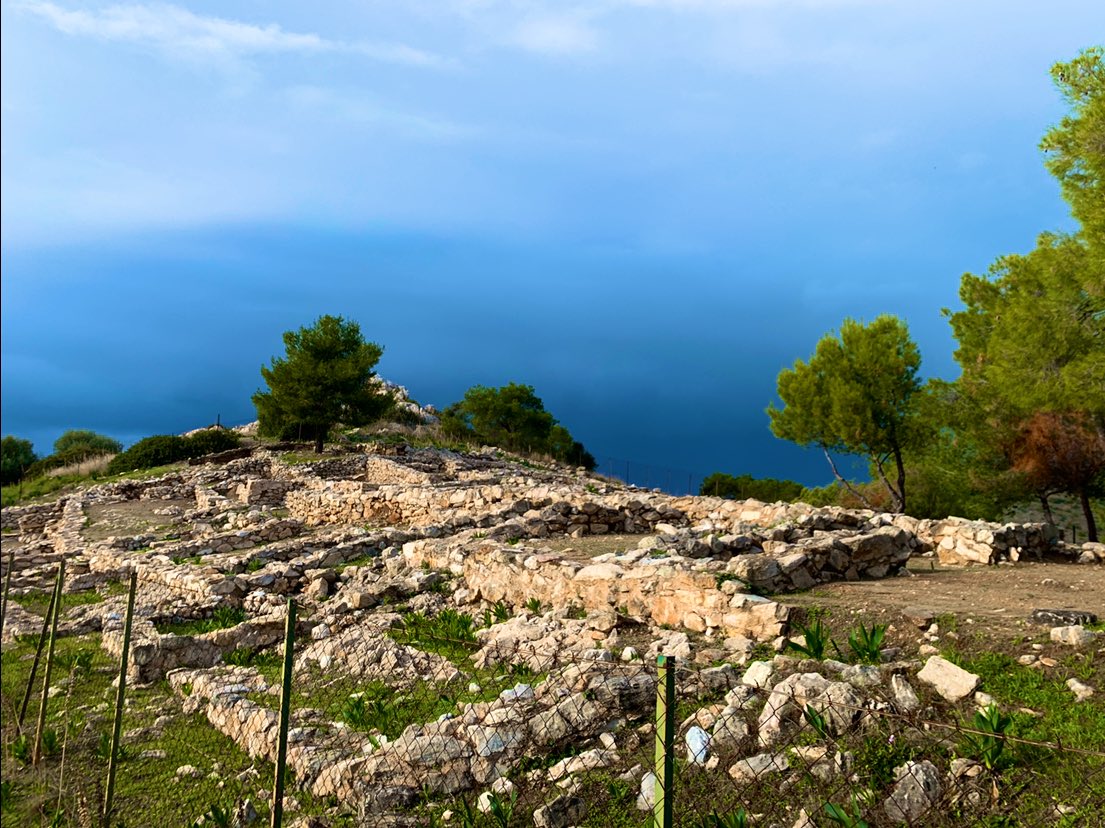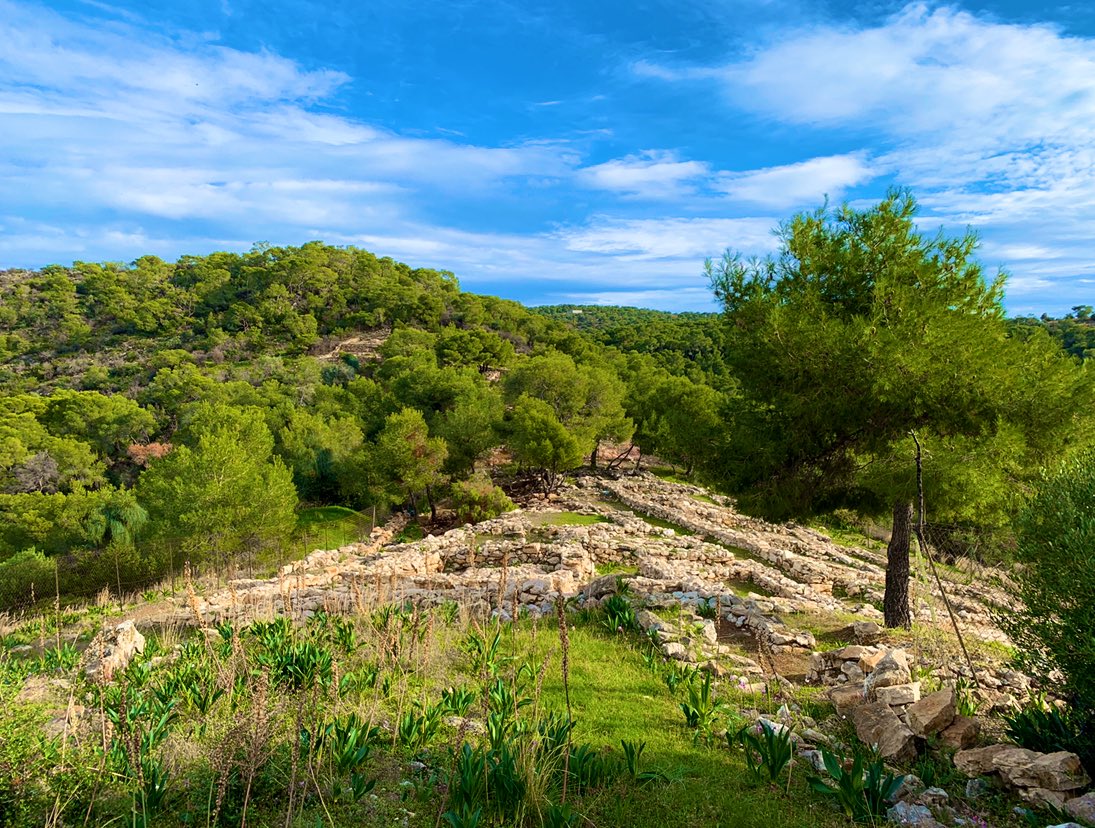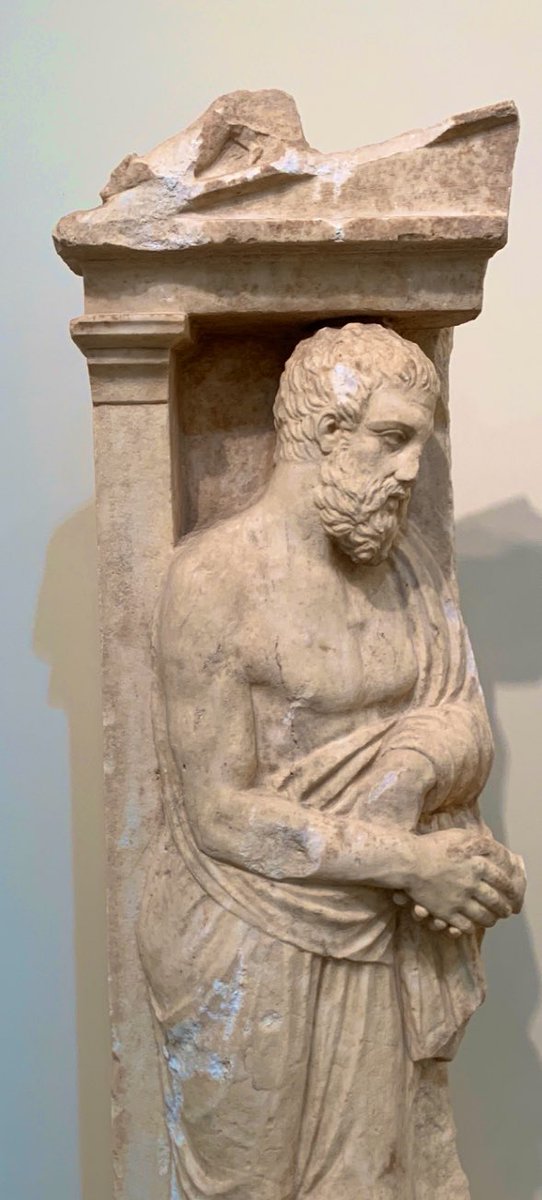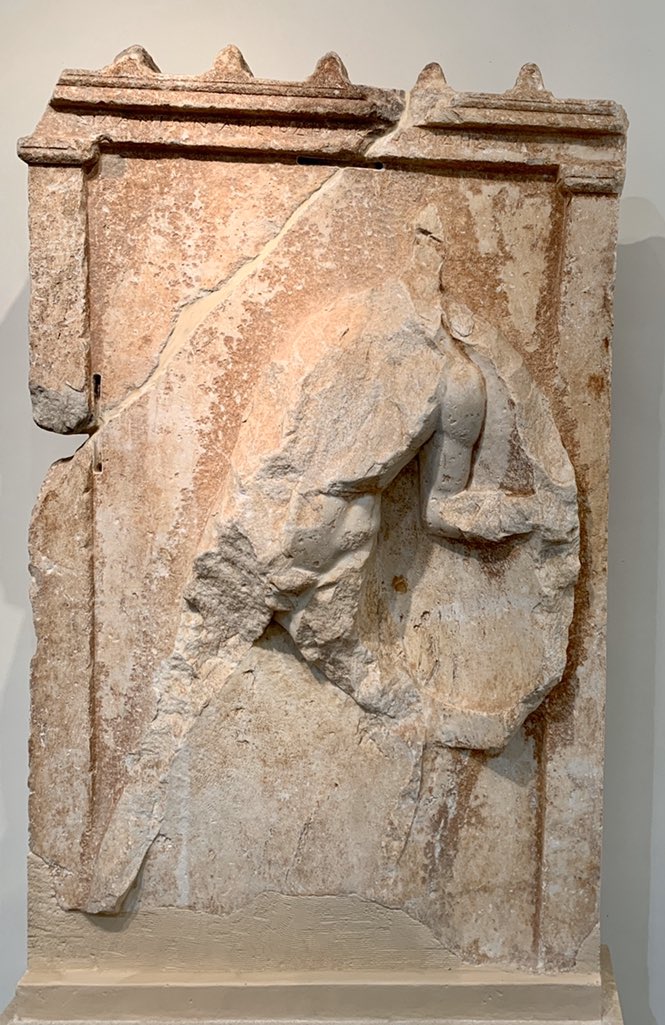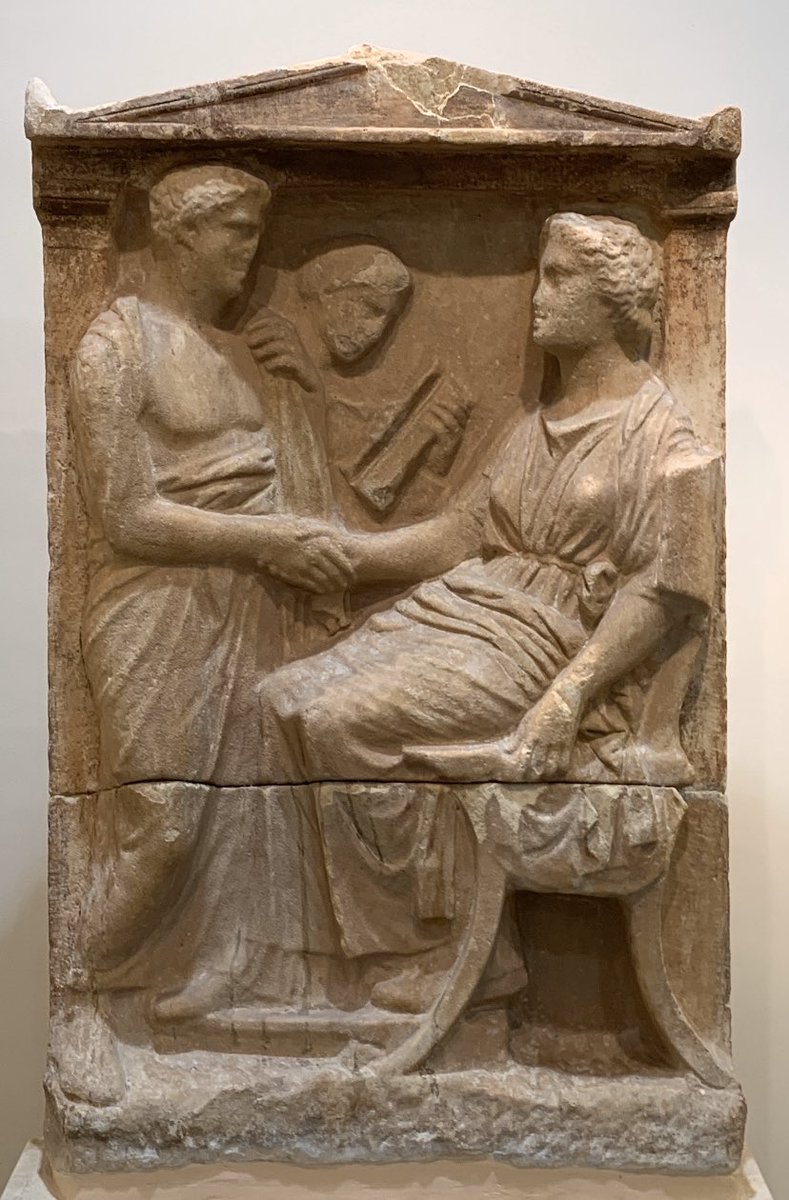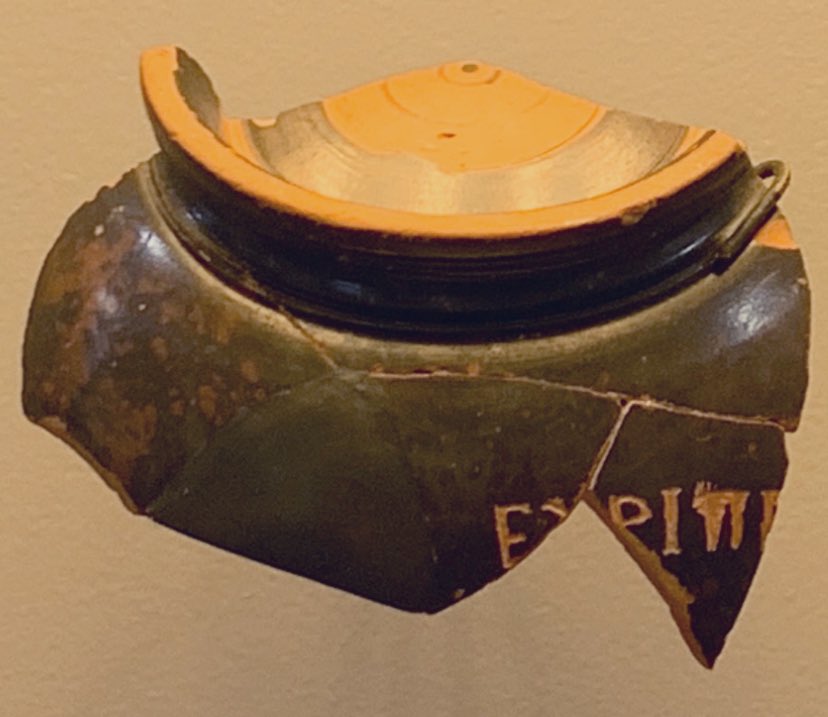Today’s digital day trip from #Athens takes us to #Salamis, largest island in the Saronic & fastest way off the mainland. If you’ve only visited for its beaches & fish, check this thread on its rich #archaeology! We’re talking caves, graves & one heck of a battle!
.
.
@ASCSAthens
.
.
@ASCSAthens
In case you missed the first two installments, check them out! We spent some time with temples at Aegina & Sounion. No such architecture on Salamis, I’m afraid, but you’ll see it’s still worth a visit! https://twitter.com/levinerx/status/1248946008572207104?s=21">https://twitter.com/levinerx/... https://twitter.com/levinerx/status/1248946008572207104">https://twitter.com/levinerx/...
Salamis is rocky & mountainous but it has fertile strips of land and excellent ports. I love this map from the Salamis museum, showing the date ranges of sites on the island. Don’t be fooled by the big gaps, they’re more indicative of residential sprawl then settlement patterns! – at Αρχαιολογικό Μουσείο Σαλαμίνας (Archaeological Museum of Salamis)
The most notable “inhabitant” of Salamis is, the Homeric king of the island. But Salamis was inhabited continually from prehistory & was likely the site of a colony of Aegina. Over time it traded hands betwern Athens & Megara, who desired its farmland, strategic position, & ports
Speaking of Ajax, I guess we should start at his acropolis! Kanakia, in the sw of the island, is the largest prehistoric site on Salamis, occupied from the Neolithic to the end of the Bronze Age. The excavators argue that the site is a palace & later hero cult to the Homeric hero
Those sorts of identifications should always be met with healthy scepticism, but there’s no doubt that it was a major site in the Saronic. There are lots of imports from Aegina & the E Mediterranean (even #Egypt!), large-scale architecture, & some of the best views on the island!
In contrast to the Bronze Age, There’s some question about the location & topography of the Classical city! Pausanias notes only one town on the island, & Strabo tells us the ancient city was on the south but the present town was on the Kynosoura peninsula, close to Athens
Pausanias does tell us quite a bit about the ancient town in the Roman period, which made use of the deep harbors of Ambelaki Bay. He describes an agora, a monument for the battle of Salamis, & sanctuaries to Artemis, Ajax, & the local mythological king Cychreus.
But those aren’t the only classical remains on the island, did I mention that the tragedian par excellence Euripides was also from the island?! He was said to have written his plays in a cave, which became something of a pilgrimage site in the Hellenistic & Roman periods!

 Read on Twitter
Read on Twitter